Ethyl 2-oxo-4-phenylbutanoate
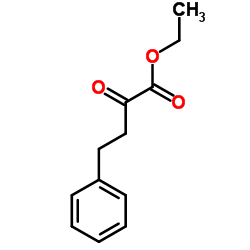
Ethyl 2-oxo-4-phenylbutanoate structure
|
Common Name | Ethyl 2-oxo-4-phenylbutanoate | ||
|---|---|---|---|---|
| CAS Number | 64920-29-2 | Molecular Weight | 206.238 | |
| Density | 1.1±0.1 g/cm3 | Boiling Point | 309.0±0.0 °C at 760 mmHg | |
| Molecular Formula | C12H14O3 | Melting Point | N/A | |
| MSDS | Chinese USA | Flash Point | 140.0±19.2 °C | |
| Name | Ethyl 2-oxo-4-phenylbutyrate |
|---|---|
| Synonym | More Synonyms |
| Density | 1.1±0.1 g/cm3 |
|---|---|
| Boiling Point | 309.0±0.0 °C at 760 mmHg |
| Molecular Formula | C12H14O3 |
| Molecular Weight | 206.238 |
| Flash Point | 140.0±19.2 °C |
| Exact Mass | 206.094299 |
| PSA | 43.37000 |
| LogP | 2.24 |
| Vapour Pressure | 0.0±0.6 mmHg at 25°C |
| Index of Refraction | 1.506 |
Synonym: Section 2 - COMPOSITION, INFORMATION ON INGREDIENTS
Risk Phrases: None Listed. Section 3 - HAZARDS IDENTIFICATION EMERGENCY OVERVIEW
Not available. Potential Health Effects Eye: May cause eye irritation. Skin: May cause skin irritation. May be harmful if absorbed through the skin. Ingestion: May cause irritation of the digestive tract. May be harmful if swallowed. Inhalation: May cause respiratory tract irritation. May be harmful if inhaled. Chronic: Not available. Section 4 - FIRST AID MEASURES Eyes: Flush eyes with plenty of water for at least 15 minutes, occasionally lifting the upper and lower eyelids. Get medical aid. Skin: Get medical aid. Flush skin with plenty of water for at least 15 minutes while removing contaminated clothing and shoes. Ingestion: Get medical aid. Wash mouth out with water. Inhalation: Remove from exposure and move to fresh air immediately. Notes to Physician: Section 5 - FIRE FIGHTING MEASURES General Information: As in any fire, wear a self-contained breathing apparatus in pressure-demand, MSHA/NIOSH (approved or equivalent), and full protective gear. Extinguishing Media: Use water spray, dry chemical, carbon dioxide, or chemical foam. Section 6 - ACCIDENTAL RELEASE MEASURES General Information: Use proper personal protective equipment as indicated in Section 8. Spills/Leaks: Absorb spill with inert material (e.g. vermiculite, sand or earth), then place in suitable container. Section 7 - HANDLING and STORAGE Handling: Avoid breathing dust, vapor, mist, or gas. Avoid contact with skin and eyes. Storage: Store in a cool, dry place. Store in a tightly closed container. Section 8 - EXPOSURE CONTROLS, PERSONAL PROTECTION Engineering Controls: Use adequate ventilation to keep airborne concentrations low. Exposure Limits CAS# 64920-29-2: Personal Protective Equipment Eyes: Not available. Skin: Wear appropriate protective gloves to prevent skin exposure. Clothing: Wear appropriate protective clothing to prevent skin exposure. Respirators: Follow the OSHA respirator regulations found in 29 CFR 1910.134 or European Standard EN 149. Use a NIOSH/MSHA or European Standard EN 149 approved respirator if exposure limits are exceeded or if irritation or other symptoms are experienced. Section 9 - PHYSICAL AND CHEMICAL PROPERTIES Physical State: Liquid Color: yellow Odor: Not available. pH: Not available. Vapor Pressure: Not available. Viscosity: Not available. Boiling Point: 241 deg C @ 760 mmH Freezing/Melting Point: Not available. Autoignition Temperature: Not available. Flash Point: > 110 deg C (> 230.00 deg F) Explosion Limits, lower: Not available. Explosion Limits, upper: Not available. Decomposition Temperature: Solubility in water: Specific Gravity/Density: 1.091 Molecular Formula: C12H14O3 Molecular Weight: 206.0962 Section 10 - STABILITY AND REACTIVITY Chemical Stability: Not available. Conditions to Avoid: Incompatible materials. Incompatibilities with Other Materials: Strong oxidizing agents. Hazardous Decomposition Products: Carbon monoxide, carbon dioxide. Hazardous Polymerization: Has not been reported Section 11 - TOXICOLOGICAL INFORMATION RTECS#: CAS# 64920-29-2 unlisted. LD50/LC50: Not available. Carcinogenicity: Ethyl 2-oxo-4-phenylbutyrate - Not listed by ACGIH, IARC, or NTP. Section 12 - ECOLOGICAL INFORMATION Section 13 - DISPOSAL CONSIDERATIONS Dispose of in a manner consistent with federal, state, and local regulations. Section 14 - TRANSPORT INFORMATION IATA No information available. IMO No information available. RID/ADR No information available. Section 15 - REGULATORY INFORMATION European/International Regulations European Labeling in Accordance with EC Directives Hazard Symbols: Not available. Risk Phrases: Safety Phrases: S 24/25 Avoid contact with skin and eyes. WGK (Water Danger/Protection) CAS# 64920-29-2: No information available. Canada None of the chemicals in this product are listed on the DSL/NDSL list. CAS# 64920-29-2 is not listed on Canada's Ingredient Disclosure List. US FEDERAL TSCA CAS# 64920-29-2 is not listed on the TSCA inventory. It is for research and development use only. SECTION 16 - ADDITIONAL INFORMATION N/A |
| Personal Protective Equipment | Eyeshields;Gloves |
|---|---|
| Hazard Codes | Xi: Irritant; |
| Risk Phrases | R36/37/38 |
| Safety Phrases | S23-S24/25 |
| RIDADR | NONH for all modes of transport |
| WGK Germany | 3 |
| HS Code | 2918300090 |
| Precursor 8 | |
|---|---|
| DownStream 10 | |
| HS Code | 2918300090 |
|---|---|
| Summary | 2918300090 other carboxylic acids with aldehyde or ketone function but without other oxygen function, their anhydrides, halides, peroxides, peroxyacids and their derivatives。Supervision conditions:None。VAT:17.0%。Tax rebate rate:9.0%。MFN tariff:6.5%。General tariff:30.0% |
|
Efficient synthesis of a chiral precursor for angiotensin-converting enzyme (ACE) inhibitors in high space-time yield by a new reductase without external cofactors.
Org. Lett. 14(8) , 1982-5, (2012) A new reductase, CgKR2, with the ability to reduce ethyl 2-oxo-4-phenylbutyrate (OPBE) to ethyl (R)-2-hydroxy-4-phenylbutyrate ((R)-HPBE), an important chiral precursor for angiotensin-converting enzy... |
|
|
Scalable biocatalytic synthesis of optically pure ethyl (R)-2-hydroxy-4-phenylbutyrate using a recombinant E. coli with high catalyst yield.
J. Biotechnol. 168(4) , 493-8, (2013) Ethyl (R)-2-hydroxy-4-phenylbutanoate [(R)-HPBE] is a versatile and important chiral intermediate for the synthesis of angiotensin-converting enzyme (ACE) inhibitors. Recombinant E. coli strain coexpr... |
|
|
Effect of ionic liquid [BMIM][PF6] on asymmetric reduction of ethyl 2-oxo-4-phenylbutyrate by Saccharomyces cerevisiae.
J. Ind. Microbiol. Biotechnol. 35(11) , 1419-24, (2008) The effect of ionic liquid 1-butyl-3-methylimidazolium hexafluorophosphate ([BMIM][PF6]) on the asymmetric reduction of ethyl 2-oxo-4-phenylbutyrate (EOPB) to synthesize optical active ethyl 2-hydroxy... |
| Ethyl 2-oxo-4-phenylbutanoate |
| 2-oxo-4-phenyl-butyric acid ethyl ester |
| BENZYLPYRUVIC ACID ETHYL ESTER |
| EINECS 265-276-9 |
| 2-oxo-4-phenylhexanoate |
| MFCD00037533 |
| Ethy 2-oxo-4-phenylbutyrate |
| Ethyl-2-oxo-4-phenylbutanoat |
| ethyl 2-keto-4-phenylbutyrate |
| 4-phenyl-2-oxobutyric acid ethyl ester |
| Benzenebutanoic acid, α-oxo-, ethyl ester |
| Ethyl 4-phenyl-2-oxobutanoate |
| ethyl 2-oxo-4-phenyl-butyrate |
| KETO ESTER |
| ETHYL-2 OXO-4 PHENYL BUTANOATE |
| ETHYL BENZYLPYRUVATE |
| ETHYL-2-OXO-4-PHENYLBUTRATE |
| 2-oxo-4-phenylbutanoic acid ethyl ester |
 CAS#:103-63-9
CAS#:103-63-9 CAS#:95-92-1
CAS#:95-92-1 CAS#:943-73-7
CAS#:943-73-7 CAS#:141-78-6
CAS#:141-78-6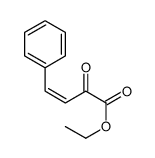 CAS#:17451-20-6
CAS#:17451-20-6 CAS#:3277-89-2
CAS#:3277-89-2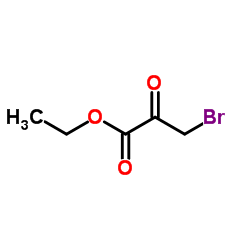 CAS#:70-23-5
CAS#:70-23-5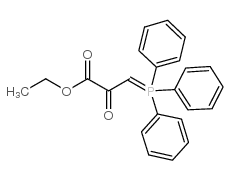 CAS#:13321-61-4
CAS#:13321-61-4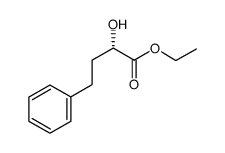 CAS#:125639-64-7
CAS#:125639-64-7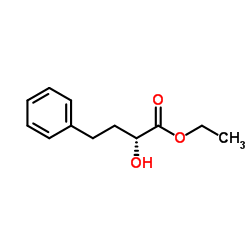 CAS#:90315-82-5
CAS#:90315-82-5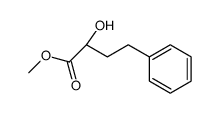 CAS#:7226-82-6
CAS#:7226-82-6 CAS#:188530-88-3
CAS#:188530-88-3![N-[(S)-1-Ethoxycarbonyl-3-phenylpropyl]-L-alanine structure](https://image.chemsrc.com/caspic/376/82717-96-2.png) CAS#:82717-96-2
CAS#:82717-96-2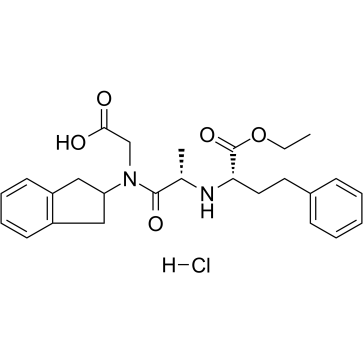 CAS#:83435-67-0
CAS#:83435-67-0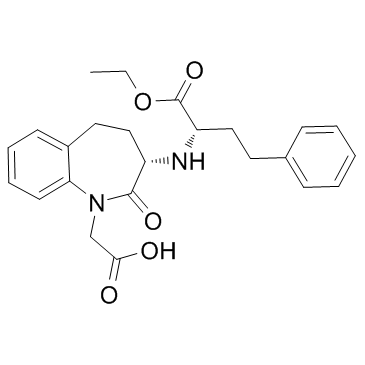 CAS#:86541-75-5
CAS#:86541-75-5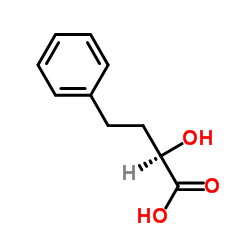 CAS#:29678-81-7
CAS#:29678-81-7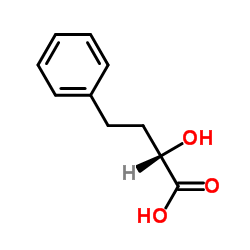 CAS#:115016-95-0
CAS#:115016-95-0
